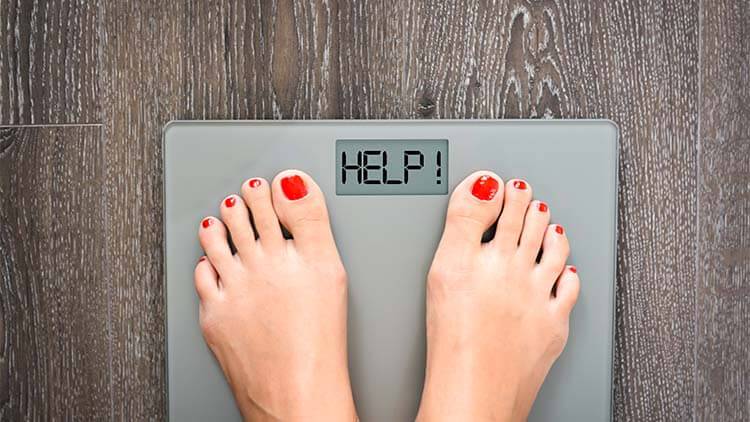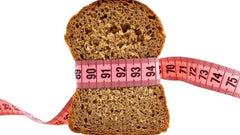
What Is The Obesity Scale? And Are You On It?
- Introduction
- What is the obesity scale?
- How is the scale for obesity calculated?
- Where do you sit on the scale based on your BMI?
- How does the rest of the country compare?
- What can you do to lose weight?
Introduction
You probably know it better as ‘BMI’, but the scale for obesity is very real, very present and very important. Not only does the obesity scale tie directly to your weight and health, once you have a clear picture of what it entails, you can take steps to regain control of your health, body and vitality.
In this article, we shall uncover the truth behind the obesity scale/BMI phenomenon and show you how to effectively lose weight naturally.
What is the obesity scale?
The easiest way to understand the obesity scale is to know your BMI and where you fall on the scale.
BMI – otherwise known as your Body Mass Index – is designed to help you determine if you’re a healthy weight for your height (if you’re over 20 years old). It calculates your BMI based on your weight and height, so the higher the answer, the more body fat you’re likely to have. And this doesn’t differentiate between the sexes. The below groups are applicable to both men and women:
- Underweight: your BMI is less than 18.5
- Normal: your BMI rests between 18.5 and 24.9
- Overweight: your BMI rests between 25 and 29.9
- Obese: your BMI is 30 or over
How is the scale for obesity calculated?
There are several ways that you calculate your BMI and see which group you belong to:
- Online calculators and apps – these are incredibly easy to use and download. All you need to know is your height in feet and inches, and your weight in pounds.
- Charts – similar to the online calculators, once you know your height (feet, inches) and weight (pounds) you can cross-reference them on the chart and work out which group you belong to: healthy, overweight or obese.
- Calculate by hand – this one differs, as it works out your obesity scale by height and weight but by using metric system measurements e.g. your weight in kg and your height in meters, squared (m²).
- Weight (kg) ÷ height (m²) = BMI
If you’d prefer to stick to pounds and inches, the formula is slightly different. Instead you need to do the following:
- (Weight in lbs x 703) ÷ (height in inches x height in inches) = BMI
- e.g. (120lbs x 703) ÷ (63 inches x 63 inches) = 21.3
Once you work out the answer, you can compare it to one of the charts we mentioned before.
Where do you sit on the scale based on your BMI?

You’ve measured your body; you’ve done the math and you now have a fair idea of how BMI’s work; but where do you sit on the scale?
Realistically you want to land within the normal range of 18.5 to 24.9. This is a fairly large section and normally gives you an allowance of a couple of stone (depending on your height).
However, it is important to remember that whilst this scale CAN help calculate body fat levels – and whether or not you belong on the morbid obesity scale – it isn’t 100% accurate for everyone.
For instance, bodybuilders will naturally have a high BMI because of the amount of muscle mass they are carrying. Does it mean they are obese? No. Similarly, does it mean that they are at high risk of cancer, diabetes and heart disease? No. In this situation, their BMI is not an accurate representation of their weight as it basically can’t differentiate between fat and muscle mass.
This same rule can be applied to older people, where loss of muscle mass means their body fat is underestimated.
For that reason, don’t use this obesity scale as the final word when deciding if you’re healthy, overweight or obese. Instead, use it as a screening tool – not a diagnostic of body fat or health – as skin thickness, your waist size, diet and health problems can all influence your results.
NOTE: if you’re really worried, we recommend speaking to a healthcare provider who can properly evaluate your weight and health.
How does the rest of the country compare?
Truthfully? We are all different. And like we mentioned before, you should only use this obesity scale/BMI scale to gauge how you’re doing body fat wise.
That being said, it’s nice to know where you fall on the scale in comparison to the rest of the country.
According to the National Health and Nutrition Survey:
– in 2016, the average adult male had a BMI of 26.6 and the average female a BMI of 26.5 (overweight).
These figures were just 3 years ago. However, according to the Centers for Disease Control and Prevention’s National Center for Health Statistics, the average BMI in the US has distinctly risen. For instance, for men the average is now 29.1 and for women it is 29.6. Both of these are borderline obese, a fact that is not to be taken lightly, as these figures are based on 9 surveys conducted on 47,000 people aged 20+ taken over 2 year intervals.
– Women: 41% normal, 30% overweight and 27% are obese
– Men: 33% normal, 40% overweight and 26% are obese
What can you do to lose weight?

Whether you choose to judge your health based on this obesity scale (by height and weight), or you decide to avoid BMI’s altogether; what is clear is that something needs to change.
Take our waistlines. Since 1999, they have increased on average by 2 inches.
Now, you might think this is nothing, but here’s the thing – if you wanted a better way to track your weight and health, then your waist size is the answer.
Think about it…
More weight around the waist equals greater amounts of visceral fat and padding on your organs. And the more visceral fat you’ve got, the higher the risk of heart disease and diabetes.
So what can you do? How can you shift this excess weight and use this weight scale for obesity to your advantage?
For a healthy, sustainable weight loss of 0.5-2lbs per week, we suggest the following:
-
Monitor your calorie intake – they say that on average women should have 2000 calories a day and men 2500 calories. Now this calorie intake is based on maintenance, and doesn’t really take into account other things such as body weight, height, age, gender, health conditions and level of physical activity – which can all influence the number of calories you should have on a daily basis. This is especially true if you’re trying to lose weight…
So what should you do?
According to the experts, once you know the correct calorie intake you need to maintain; you should decrease your daily allowance by 500 calories a day to ensure a healthy weight loss of 1lb a week.
Now before you drop your calorie intake too dramatically, most women stick to 1,200 calories and men 1,800 calories a day to help them lose weight. Both of these intakes will ensure your body receives sufficient nutrients, whilst allowing you to shed pounds at a steady, longer lasting pace.
But how do you track?
– Food apps: these are handy – especially whilst food shopping or ordering food at a restaurant – as you can quickly check the calorie intake of the item.
– Food journal: these are particularly useful for helping you to identify bad eating habits that you commit subconsciously. The key with this one is writing down everything you eat and drink including tea, coffee, milk and juices as they all count towards your calorie intake. They also eliminate the need to rely on your memory, as there is no forgetting what you’ve had if you’ve noted it down straight away.
– No guesswork: never guess your portion sizes as the likelihood is you’ll underestimate what you’ve had. Instead, cook from scratch and use kitchen scales to ensure you know exactly you’re eating and in what quantity.
– Record everything: and we mean everything. Every snack. Every nibble.Most importantly, don’t rely on calorie monitoring alone to help you to lose weight.
- Diet – the easiest way to lose weight is to take back control of your eating habits. So alongside portion control and calorie counting, you should also track how much of each major nutrient you are having.E.g. record how much protein, carbohydrates and fats (in grams) you are having with every meal. This is especially important when it comes to trans fats and fiber because reducing the amount of trans fats you have – whilst increasing your fiber – can all help to improve your health.Another thing to remember is that everything is okay if eaten in moderation. This means, you don’t have to completely cut carbs, fats etc. from your diet. Instead, track your intake and keep to the recommended daily amounts, and you can still enjoy your food.
-
Regular exercise – one of the best ways to jumpstart your metabolism and increase fat burn is exercise. By elevating your heartrate and ensuring your muscles receive plenty of oxygen; combined they can help turn fat into fuel and boost weight loss.Now you don’t have to be a gym enthusiast to get results. Simply going for a 20-30 minute walk during your lunch break each day can help to trigger increased calorie burn.Alternatively you can try incorporating the following into your workout:
- 30-40 minutes high intensity training/cardio, 2-3 times a week
- Jogging 2-3 times a week for 20-30 minutes (you can try the couch to 5k with this one, incorporating walking and jogging at 1-2 minute intervals. With practice you’ll eventually be able to jog the entire time).
- Swimming 2 times a week (this is low impact, meaning you won’t jar your joints as you swim).
- Bike riding (you can build up your stamina – and how regularly you bike – as you practice. Aim to ride for 20-30 minutes to start with). Strength building (FACT: muscles may weigh more than fat, BUT they burn more calories when in use).
-
Supplements – we could talk for days about the variety of herbal weight loss supplements that are out there which can encourage promising weight loss results.For us, it is about the ingredients they use. The right combination at the right dosage can trigger natural weight loss.Take the following natural ingredients/herbs:
Capsimax powder – a blend of capsicum, piperine, caffeine and niacin, this powder has got strong thermogenic properties. By raising your internal body temperature, this encourages increased fat burn.
Chromium picolinate – this mineral can help curb sugar and carb cravings, helping you to control your sugar levels and reduce your appetite.
Caffeine – this stimulant can help you to stay alert, more focused and feel less hungry. This is due to it increasing thermogenesis, which not only bolsters your fat burn but gives you the energy to workout harder.
L-carnitine fumarate – found in red meat, nuts and green vegetables, this amino acid helps to turn fat stores into energy, helping you to lose weight and combat fatigue.
These ingredients are just a handful found in popular weight loss supplements such as PhenQ. 100% natural and blended at optimal dosages, by grouping these ingredients together PhenQ can help to safely burn fat, lose weight and boost your physical capabilities (as you’ll have the energy to workout harder).
For more information on PhenQ and how its ingredients can help you to safely lose weight, click here.
Conclusion
Wherever you fall on the obesity scale, taking back control of your body doesn’t have to be a hardship. Nor does it have to be gruelling or stressful.
Instead, by eating right, tracking your calories, exercising regularly, and enlisting the help of proven weight loss supplements (such as PhenQ), you can tip the scales – literally – in your favor and achieve the body YOU want.
So if you don’t fancy being another statistic, why not add the above tips to your weight loss plan?




